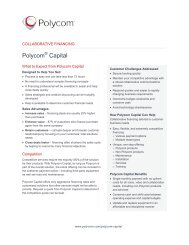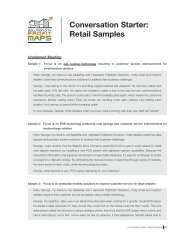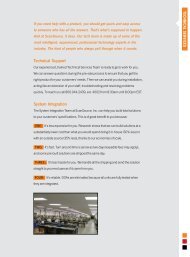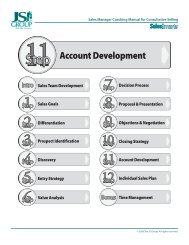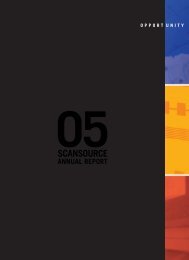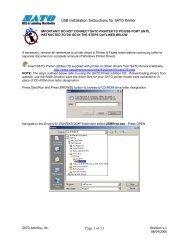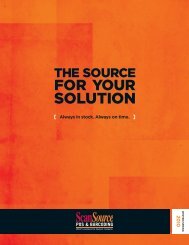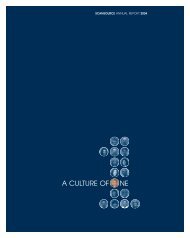Datalogic - ScanSource
Datalogic - ScanSource
Datalogic - ScanSource
You also want an ePaper? Increase the reach of your titles
YUMPU automatically turns print PDFs into web optimized ePapers that Google loves.
It’s very important to note, however, that<br />
the 2010 Sunrise date does not require<br />
retailers to do anything new in handling fresh<br />
produce, variable-measure foods, coupons,<br />
or Scan-Based Trading data. Adoption of GS1<br />
DataBar TM for these applications will occur<br />
over time when workgroups in the four areas<br />
release standards, and only when retailers<br />
decide it makes business sense to change. The<br />
status of these application standards efforts is<br />
presented later in this paper.<br />
To reiterate, starting in 2010 manufacturers<br />
are authorized to mark their retail packages<br />
with GS1 DataBar TM codes. Therefore, by 2010<br />
retailers must ensure that all point-of-sale<br />
scanners (and any other scanners that scan<br />
trade items) are capable of and enabled to<br />
read GS1 DataBar TM codes. And they must<br />
verify that these scanners are also capable of reading and delivering the additional AI-based information that may be<br />
encoded on future DataBar TM codes. That’s it. Nothing more.<br />
A Word About GTINs and Application Identifiers<br />
The Global Trade Item Number (GTIN) provides unique identification for every trade item in the global supply chain.<br />
A box of cereal from General Mills has a different GTIN than a box of similar private label cereal. But fresh foods are<br />
different. Since they aren’t marked with GTINs today, there is no automated way to differentiate a banana from Del<br />
Monte from a banana from Dole.<br />
The GTIN has two main components – the Company Prefix of the manufacturer (assigned to it by GS1) and an Item<br />
Reference Number assigned by the manufacturer. Every bar code on a trade item encodes a GTIN. But different bar<br />
code types have different capacities, so GTINs come in various lengths.<br />
Bar Code Symbology Capacity GTIN Type<br />
UPC-A 12 GTIN-12<br />
UPC-E 8 GTIN-12<br />
EAN-13 13 GTIN-13<br />
EAN-8 8 GTIN-8<br />
GS1 DataBar TM 14++ GTIN-14<br />
Since the Uniform Code Council 2005 Sunrise, all North American retailers have been capable of reading, storing<br />
and processing of GTIN-8, GTIN-12, and GTIN-13 identifiers. (Retailers in the rest of the world have always had this<br />
capability.) Although it was highly recommended by the UCC at the time, there is no assurance that retailers have<br />
upgraded their systems to handle the GTIN-14.<br />
Thus it is important to point out that the 2010 Sunrise does not require retailers to accept GTIN-14. Although the GS1<br />
DataBar TM can encode the GTIN-14, it can also encode GTIN-8, GTIN-12, and GTIN-13. 2010 Sunrise specifically prohibits<br />
the encoding of GTIN-14 in GS1 DataBar TM until such later time as trading partners agree to it.<br />
Page – 4<br />
A White Paper by <strong>Datalogic</strong> Scanning, Inc.






